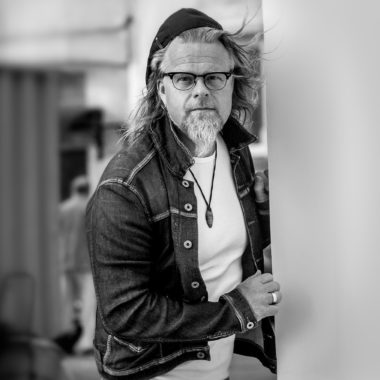Juha Metso

Artist banks
Äänitaiteen pankkiBasic information
b. 1965, Kymi
Photographer, Visual Artist, Media Artist, Sound Artist
Residence: Helsinki
Contact information
Phone number: +358 500 708883 +358 44 5515918
Email: juha.metso@gmail.com http://www.juhametso.com
Artist’s Statement
Juha Metso is among the very few Finnish professional photographers who have managed to successfully maintain a career consisting of both hectic daily newspaper work and a high- profile artistic output of appreciated exhibitions both in Finland and abroad. He has reached the point where he, in his home country, is one of the most revered and acclaimed contemporary photographers. Through the work he has made for the largest Finnish daily paper Helsingin Sanomat, he recently has been chosen Photographer of the Year and Feature Photographer of The Year twice. Nature- and particularly birdlife photography has both been the starting point in his career and one of the strongest continuing themes in his work.
As an artist, Metso paints with a broad brush, or should I say lense. He draws from both cultural and literary history, from zoological references to the philosophical debates of Europe's past. Even when ironic or on the surface humorous, his work contains a serious level of contemplation regarding themes like injustice, the concept of death, cultural traditions and a sometimes disturbing look at the manifestations of power. Although Juha Metso as a person likes to give the impression of being a somewhat, for want of a better word, laddish character, I personally know very few who possess his unique sensitivity, and have both the skill and the vision to present it so engagingly in their art.
John Knutas journalist, art critic
Juha Metso photographs nature and human life as part of it boldly, openly and trying his utmost. He does not limit or interpret his work. As a photographer, Metso is a rugged, passionate, soft and sentient basic dude, who composes dramatic, funny, endearing and bold images of reality.
Nature is the beginning and the end – snow and ice cover the human face.
Leena Räty, Chief Curator, South Karelia Art Museum
As an artist, Metso paints with a broad brush, or should I say lense. He draws from both cultural and literary history, from zoological references to the philosophical debates of Europe's past. Even when ironic or on the surface humorous, his work contains a serious level of contemplation regarding themes like injustice, the concept of death, cultural traditions and a sometimes disturbing look at the manifestations of power. Although Juha Metso as a person likes to give the impression of being a somewhat, for want of a better word, laddish character, I personally know very few who possess his unique sensitivity, and have both the skill and the vision to present it so engagingly in their art.
John Knutas journalist, art critic
Juha Metso photographs nature and human life as part of it boldly, openly and trying his utmost. He does not limit or interpret his work. As a photographer, Metso is a rugged, passionate, soft and sentient basic dude, who composes dramatic, funny, endearing and bold images of reality.
Nature is the beginning and the end – snow and ice cover the human face.
Leena Räty, Chief Curator, South Karelia Art Museum
